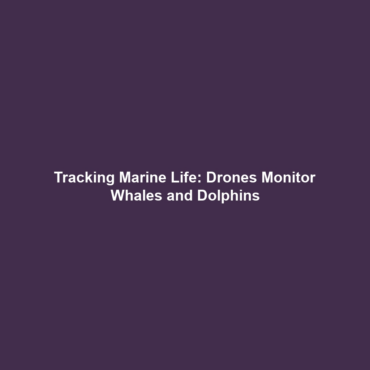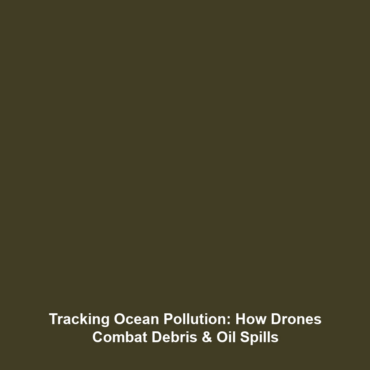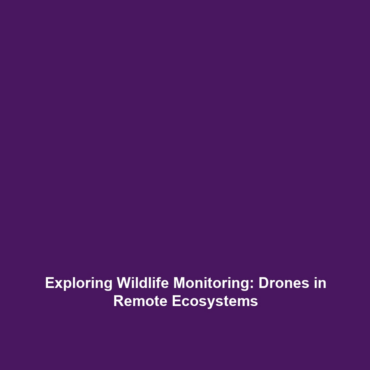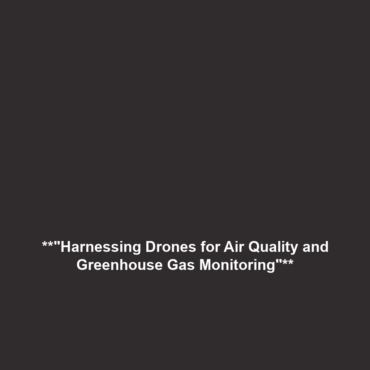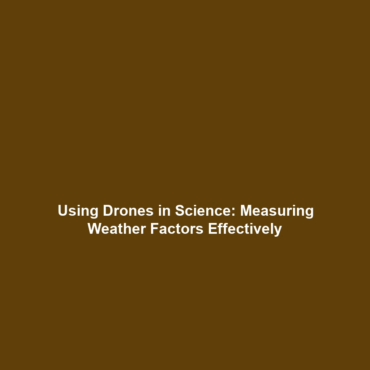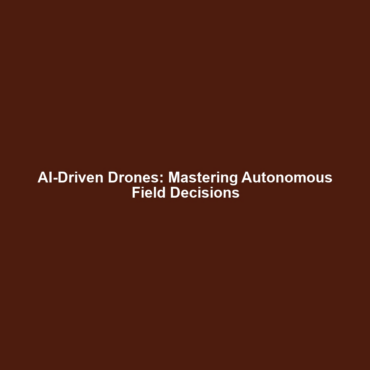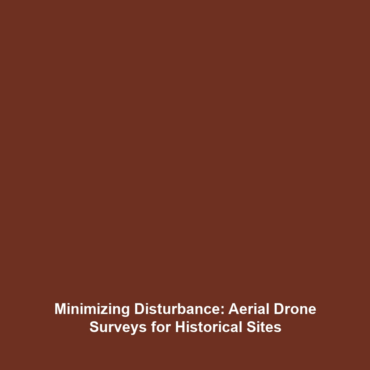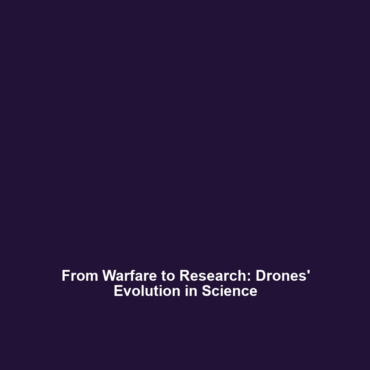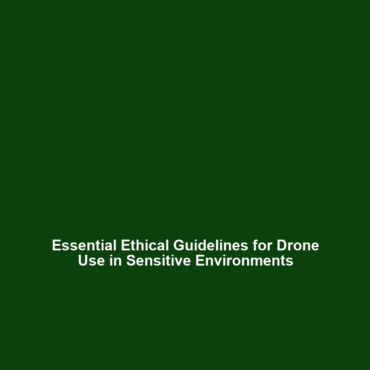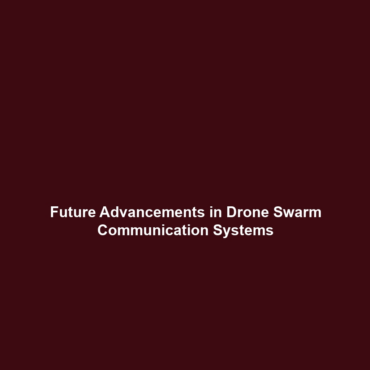How Drones are Used to Track Whale Migrations, Dolphin Behavior, and Other Marine Species
Drones have emerged as a groundbreaking tool in the field of marine research, significantly enhancing our understanding of whale migrations, dolphin behaviors, and other marine species. By providing unobtrusive observation and data collection capabilities, drones enable scientists to monitor these creatures more effectively than traditional methods. This article explores the implications of drone technology within the broader context of Drones in Science, highlighting its innovations and contributions to marine ecology.
Key Concepts
The integration of drones in scientific research has brought forth several key concepts:
- Remote Sensing: Drones equipped with advanced sensors gather data on marine life from a distance, minimizing disturbance.
- Real-time Data Collection: Aerial surveillance offers immediate access to information, helping researchers observe behavior and movements as they happen.
- Ecological Impact Assessment: Drones facilitate studies on the effects of environmental changes on species behavior and migration patterns.
Applications and Real-World Uses
Drones are utilized in various impactful ways to study marine species:
- Monitoring Whale Migrations: Researchers use drones to track the routes and behaviors of different whale species during their migration seasons.
- Dolphin Behavior Studies: Aerial footage captured by drones allows for the observation of social interactions and hunting techniques in dolphin pods.
- Habitat Mapping: Drones assist in documenting and mapping critical habitats, contributing valuable data for conservation efforts.
These examples illustrate how drones are used to track whale migrations, dolphin behavior, and other marine species within the category of Drones in Science.
Current Challenges
Despite the advantages, several challenges exist in the application of drones for marine studies:
- Regulatory Restrictions: Local regulations on drone usage can limit research opportunities in certain marine environments.
- Battery Life and Range: Limited flight time can restrict data collection during extensive surveys.
- Environmental Interference: Weather conditions and oceanic landscapes can hinder drone operation and data quality.
Future Research and Innovations
As drone technology continues to advance, future research holds exciting possibilities for marine studies:
- AI Integration: The incorporation of artificial intelligence may enhance data analysis capabilities, enabling the identification of patterns that manual observation might miss.
- Improved Sensors: Next-gen sensors could provide higher resolution imagery and broaden the types of data collected.
- Collaborative Studies: Initiatives involving multiple research institutions using drones could yield comprehensive data on global marine trends.
Conclusion
The role of drones in tracking whale migrations, dolphin behavior, and other marine species represents a significant advancement in marine science. The ability to observe and collect data with minimal disruption enhances our understanding of these vital ecosystems. As technological innovations continue to emerge, the future of marine research is set to become even more promising. For more information on the impact of drones in science, explore our related articles on marine conservation and wildlife monitoring.
